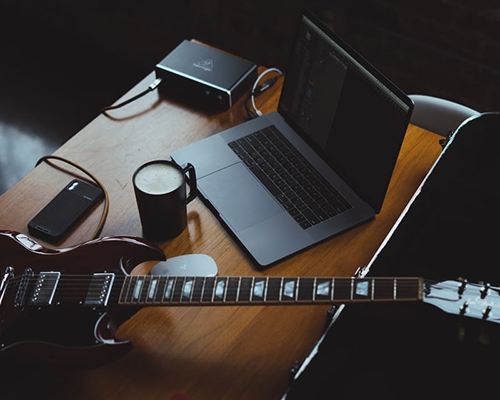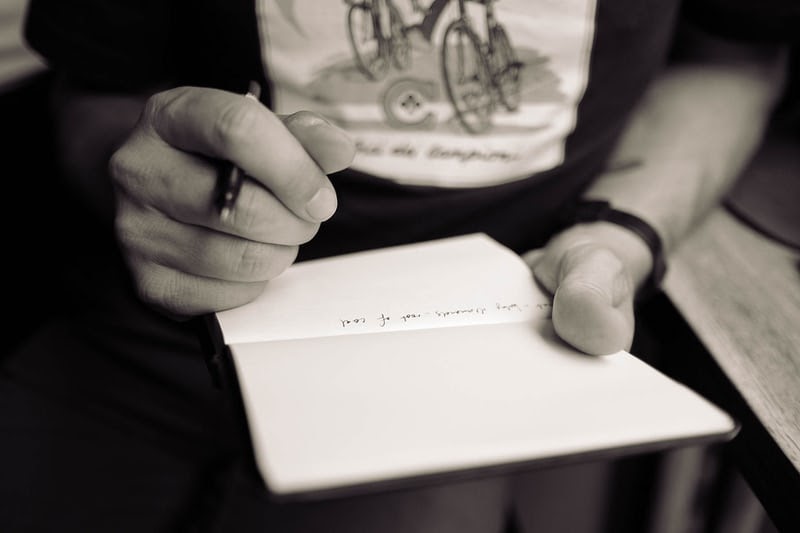Song Writing 101
By M. L. Wolf

Because this article is called “Song Writing 101” you will find the basic elements of song writing right here. When you are getting into song writing the place to start is to spend time listening to alot of good songs, not only songs that are currently popular, but songs from past eras as well. Rolling Stone has compiled a list of what they perceive to be the 500 Greatest Songs of All Time. Spend some time working your way through the list to get a better grasp of what good songs actually sound like! Try to figure out what kind of songs you really like.
Now that you’ve listened to lots of examples, you will have noticed that good songs all have some elements in common; a combination of great lyrics and a solid musical background. If you already have some lyrics to work with, fabulous! Otherwise you might want to come up with some lyrics first.
Lyrics

Lyrics can set the mood and character of your song. They can help you to come up with a totality for your song (major or minor). If your lyrics are suggestive of perhaps an unhappy, melancholy or heartbroken and sad time, you may want to write your song in a minor key. On the other hand, if your subject matter is of a happy, light hearted, carefree or cheerful nature you probably will want to choose a major key for your song. It’s really not difficult to come up with subject matter for a song: I love you. I hate you. We don’t get along anymore. You left me. He/she loves you. It’s raining. We should break up. My dog died. You are wonderful. You get the idea, there are just so many subject matters to write about!
You can write your music first and add in the lyrics later. However, if you are new to song writing, you may find it easier to start with a set of lyrics. Often song lyrics will be written such that there are verses and a chorus. The chorus will be a few lines that can be repeated after each verse of the song. It usually will end up looking something like this:
Verse
CHORUS
Verse
CHORUS
BRIDGE
CHORUS
This is a formula which works, because audiences understand it. They are able to understand and follow where the song is going.
Let’s look at how this shakes down when we start to add music!
You will need to know some basic theory in order to be able to write with confidence. Some people spend years studying music theory, but don’t worry if you haven’t done this. There are several good programs that are available online to help you out. Captain Plugins is a set of songwriting tools that will help you to write effectively.
Let’s take a look at where you might want to begin your song writing on the musical side.
Good Chord Progressions

Many song writers will begin with a good solid chord progression, a series of two or more chords that lead into one another in a reasonable manner. The chords will be identified by roman numerals (I, IV, V ect) and are decided by the key that you are in. This article that explains chord charts will help you with figuring out good chord progressions.
Captain Plugins can help you to easily write chord progressions. Captain Chords comes loaded with 68 chord progressions as selectable presets. You can experiment with the different chord progressions till you find something that suits you.
Here is another of our articles that gives you some examples of common chord progressions to use in pop music.
Write Chords Faster with Captain Chords
- Use Captain Plugins to write your own Chord Progressions, Hooks, Melodies and Basslines
- Export to your DAW
- Available on Mac and Windows.
Time Signature and Tempo
Most pop songs are written in either 4/4 or ¾ time. This just means that there are either 4 or 3 beats to a bar, with a quarter note receiving one beat. Chord changes may occur quite predictably on beats 1 and 3 in 4/4 time, and often just on beat 1 in ¾ time. Try setting a metronome to count the beats for you while you play through your chord sequence. Your tempo (how fast or slow your song is) is probably going to be dictated by your subject matter. Your melancholy and gloomy songs ( You left me. The world is coming to an end.) will feel like they should have a slower tempo. On the flip side your rapturous, sunny, carefree tunes will benefit from a faster, more upbeat tempo. You can always try setting a metronome to one of your favorite songs to see what the tempo of it is, then try to write something using that same tempo.
Adding a Melody
The melody is what is probably the most memorable part of your song. It’s the part that people can actually hum or whistle after they’ve heard the song. The melody is what gets stuck in your head. A good melody can stand alone without lyrics, however it is perhaps less stressful to write a melody while following your lyric lines. If you can, come up with a hook; a catchy phrase or melody or combination of the two that catches the listener’s attention. Think of Micheal Jackson’s “Beat it” and chances are what you immediately think of is the “hook” just beat it!
Let’s look at some examples of pop songs with particularly good melodies.
You’ve got to start with Michael Jackson’s “Thriller”. If you’ve never watched the video, be prepared to be amazed. Keep in mind this is almost 30 years old! This one is the shortened version, the actual melody starts a little ways in.
Pharrell’s “Happy” may have been written for a kid’s movie (Despicable Me II) but there is no denying that it’s upbeat melody with cute rhythms that make everyone who hears it just feel…happy!
Maybe you have a little bit of a melody running through your head. Try playing it with Captain Play using your computer keyboard or MIDI keyboard as this is much easier than trying to use your mouse in a DAW. Following your chord structure will make this a little simpler for you. If you have already made a backing track with chords and rythm, you can loop back again and again until you’ve come up with something that you like.
Editing

Once you’ve got something written it’s time to reflect and take a critical look at what you’ve done. Have you actually written something that is singable? Does the key work? Does the melody work with the lyrics? Does the melody work with the chord sequences? These are all things that you can change. If you are running short on ideas you can always collaborate with a partner. Sometimes you just need to take a step back, try working on a different song, and come back to this one later. You may then think about it in a new light.
As with almost everything in life, songwriting is an art form that requires practise. You probably won’t make a million dollars with your first song, but then again, perhaps you will! I hope you do!
It’s super easy to create your own ideas from scratch. Visit the official Captain Plugins homepage and see how they’ll help you explore music and write your own original productions.
